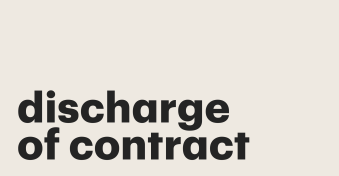Agreeing to an unconditional lien waiver without proper understanding can leave you without payment and without the ability to recoup your losses.
In this article, we’ll discuss everything you need to know before considering an unconditional lien waiver.
Key takeaways:
- Placing a lien on the customer’s property or assets allows the claimant some recourse.
- The different types of lien waivers are; conditional lien waiver, unconditional lien waiver, waiver on progress payment, and waiver on final payment.
- Writing an unconditional lien waiver correctly can help cover all the bases.
- Using templates to create unconditional lien waivers can make the whole process much easier.
What is a lien?
A lien is a type of collateral.
When a claimant and a customer go into a contract, it’s with the understanding that both sides will achieve a mutually desired outcome.
For the customer, that outcome can range from loans to assets to construction projects. For a claimant, the desired outcome is payment.
If the customer fails to meet payment responsibilities, the claimant needs a way to recoup their losses.
Placing a lien on the customer’s property or assets allows the claimant some recourse without getting into a messy contract dispute.
The assets can be seized and sold to recoup any losses incurred by the claimant.
Types of lien
The most common types of liens are:
Bank liens
Let’s use buying a car as an example.
When a bank (the claimant) loans a person (the customer) money to purchase a vehicle, that bank can place a lien on the vehicle.
If the vehicle owner doesn’t keep up loan repayments to the bank, the bank can legally seize the vehicle and sell it to recoup losses.
Banks can issue liens against any asset that the customer wishes to buy with a bank loan.
Bank liens are also an imperative in mortgages. Property owners who fail to make mortgage repayments can have their property seized and sold by the bank that issued the mortgage.
Tax liens
Tax liens are generally enforced by federal, state, and local government contracts.
If a property owner doesn’t pay property taxes, the Internal Revenue Service can place a lien on their property.
The property can be sold to claim back the taxes owed.
Judgment liens
Judgment liens are non-consensual, as you do not volunteer for them — they are brought against you by a judge.
In the case of a lawsuit, a judge can issue a lien against your assets.
For example: you’re driving negligently and hit someone with your car.
The victim might sue you for damages, and a judge may then place a judgment lien against your property.
If you don’t pay up, your property can be seized and sold to pay the claimant what they’re owed.
Mechanic’s liens
A mechanic’s lien in construction ensures that builders, contractors, and other stakeholders in the building or repairing of a property get paid for labor and materials in the event of liquidation.
Having a mechanic’s lien in place allows a construction project to get started since no builders or contractors want to risk buying supplies and wasting time on a project without ensuring payment at the end.
A mechanic’s lien goes into place before the project begins and remains in action until the project is completed and everyone is paid.
If the property owner doesn’t pay up, the lien goes into effect.
By law, the construction stakeholders can seize the property and sell it to recoup their losses.
What is a lien waiver, and what are the different types?
If a lien designates a customer’s assets as collateral, a waiver of lien releases the customer’s assets from that liability.
To return to our property example, once a construction project has been completed and all the bills have been paid, a lien waiver releases the property from its lien.
The customer owns the property in full, and those responsible for its construction have no rights to it.
There are a few types of lien waivers:
Conditional lien waiver
A conditional lien waiver is signed in advance and specifies upfront which conditions need to be met before the waiver goes into effect.
The condition is generally a payment from the customer, whether partial for progress made or final.
Unconditional lien waiver
Unconditional waivers go into effect the moment they’re signed.
When using an unconditional lien waiver, it’s important to have 100% confidence that whatever conditions the lien depends on have been met.
If not, the claimant has waived their right to compensation should the customer fail to pay.
Waiver on progress payment
These take effect when an agreed-upon partial payment is made.
Progress payment waivers are useful for projects or contracts that take a long time, where payments are made in installments.
For example, a construction company involved in a large housing development might have a partial release of lien in place.
Once they’ve finished one property and received a payment, they can release the company that hired them from placing a lien upon that specific property.
Waiver on final payment
These waivers are used when all the bills are settled between the claimant and the customer.
They are used at the very end of a project or agreement and release the customer from any liens placed upon their assets.
What to include in an unconditional waiver
Writing a successful unconditional waiver can be difficult, so let’s look at what should be included.
Claimant’s name
The name of whoever receives payment for the loan, work, or goods.
Customer’s name
The customer paying for the work or loan.
Location
For construction lien waivers, the job location should be stated.
Owner
For construction lien waivers, the property owner or owners should also be listed.
Dates
The date the waiver goes into effect.
Once the date is reached, the claimant automatically waives their right to place a lien on the customer’s assets.
Payment amounts
The agreed-upon payment amounts between all parties.
Exceptions
Any exceptions to the lien waiver, such as unforeseen circumstances that delay work or payments.
These should be agreed upon by all parties upfront and cannot be negotiated once the waiver is signed.
Signatures and dates
All stakeholders should sign and date the waiver.
Unconditional waiver and release on progress payment template
As you can see, unconditional lien waivers can be incredibly complex. Going into one without proper understanding might put you at risk.
To mitigate those risks, you can use templates to ensure contract integrity.
PandaDoc provides templates for a variety of needs.
If you need some extra confidence when signing an unconditional waiver and release on progress payment, it’s a good idea to use a reputable and experienced source like PandaDoc to get started.
What are the best practices to adopt when signing an unconditional waiver and release form?
To ensure full confidence when signing an unconditional waiver and release form, it’s important to adopt some best practices.
Read the waiver
It might sound like common sense, but all stakeholders involved in the waiver should read and understand the contract.
Not everyone understands contract terminology, considering contracts can be complex and contain legal language most people aren’t familiar with.
In these situations, hiring a legal professional can help.
Make sure payment has cleared
Never sign any unconditional releases without being 100% certain that payment has been delivered and cleared.
If you do, you cannot recoup your losses should the customer default on payment.
If the money isn’t in your bank account, don’t sign!
Check the dates
Make sure the dates match up.
Unconditional waivers on progress payments require payments to be made by certain dates to release the customer from any liens.
If the dates are off, you might be inadvertently releasing the customer from payment before you get paid.
If that happens, you have no payment and no recourse to pursue damages.
Utilize automation to keep documents secure
If you deal with a lot of documents and contracts, it can be difficult to keep everything organized and secure.
Unconditional lien waivers are serious business.
If, for example, an unconditional release has been tampered with by a bad actor, you might be putting yourself at risk.
Using PandaDoc’s contract management software, you can allow and revoke access to secure documents to ensure that only verified parties can access and edit them.
You can also track edits and version history to make sure nothing has been tampered with.
Understand your rights when it comes to liens and waivers
At PandaDoc, we understand that liens and waivers can be complex and intimidating.
In the dense and foggy world of contracts, clauses, and legal jargon, it can be difficult to know if you’re fully protected or not.
It’s important to understand your rights before signing any contract.
This article, as well as many others on our blog, can help you make an informed decision when it comes to signing unconditional waiver and release upon progress payment contracts.
Disclaimer
PandaDoc is not a law firm, or a substitute for an attorney or law firm. This page is not intended to and does not provide legal advice. Should you have legal questions on the validity of e-signatures or digital signatures and the enforceability thereof, please consult with an attorney or law firm. Use of PandaDocs services are governed by our Terms of Use and Privacy Policy.


